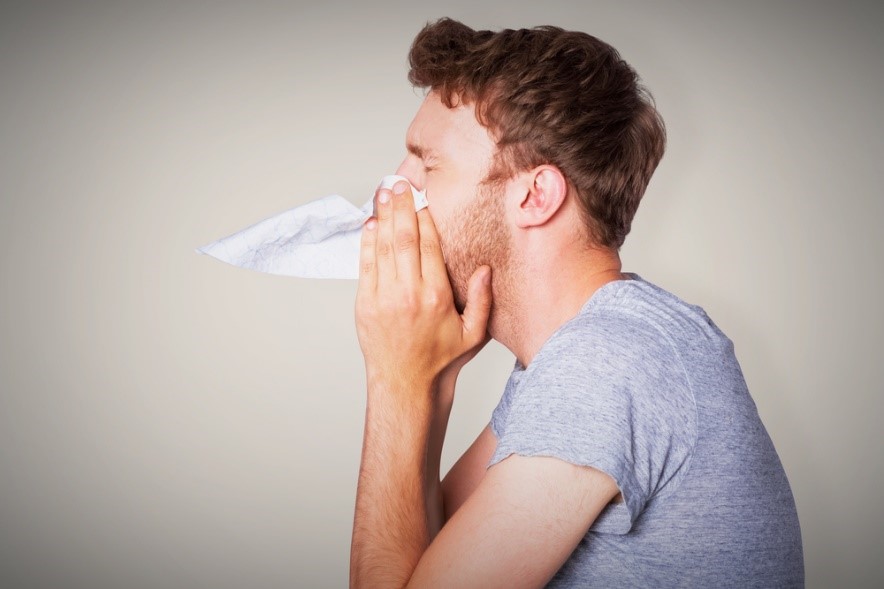Understanding Lung Cancer: Early Symptoms, Diagnosis, and Risk Factors
Lung cancer is one of the foremost causes of cancer deaths in the world and is caused by the uncontrolled growth of cells within the lungs. While the most prevalent cause of lung cancer is smoking, non-smokers are also at risk.
This disease can be fatal, and early detection is crucial for treatment. In this article, we will cover lung cancer, its early symptoms of lung cancer, and tools for catching it early.
What is Lung Cancer?
Lung cancer is a type of cancer that originates in the lungs. Cell mutations cause the uncontrollable and abnormal growth of lung cells, which leads to the formation of masses. These masses, known as tumours, eventually affect the organs in the body.
Lung cancer typically starts in the lungs’ airways (known as bronchi bronchioles) or tiny air sacs (called alveoli). There are many forms of lung cancer, but the two major variations are small-cell lung cancer (SCLC) and non-small-cell lung cancer (NSCLC). Other variations include metastatic lung cancer (cancer that starts elsewhere and spreads to the lungs), sarcomas, and lymphomas.
What are the Signs and Symptoms of Lung Cancer?
Many times, lung cancer symptoms can mimic other, less severe illnesses. This can make early detection difficult. Many patients don’t get diagnosed until the later stages of the illness, when symptoms are extreme. It is important to get them checked, especially for those who smoke. Some warning signs to watch for include:
1. Stage 1 Cancer Symptoms
These include seemingly ordinary symptoms, such as:
– A persistent cough that worsens over time
– Phlegm with blood
– Recurring pneumonia or lung infections
– Chest pain
– Shortness of breath
2. Stage 2 Lung Cancer Symptoms
Similar to stage 1, stage 2 lung cancer does not always cause noticeable symptoms. However, some signs could include:
– A worsening, persistent cough that produces mucus with blood
– Shortness of breath
– Chronic, persistent chest pain
– Frequent lung infections
3. Stage 3 Lung Cancer Symptoms
In this stage, the cancer has spread to other areas outside the lungs and will most likely have more noticeable symptoms. Some of the most common signs during this stage are:
– A persistent, worsening cough that produces bloody mucus
– Shortness of breath
– Chest pain
– Hoarseness in the voice
– Wheezing
– Fatigue and weakness
– Reduced appetite and unexplained weight loss
– Frequent, recurring lung infections, including pneumonia
4. Stage 4 Lung Cancer Symptoms
In stage 4 lung cancer, the disease has spread to more than one place outside the lung. Symptoms could include:
– A persistent or worsening cough, coughing or spitting up blood
– Shortness of breath and wheezing
– Chest pain that can worsen when inhaling deeply, coughing, or laughing
– Hoarseness in the voice
– Fatigue and weakness
– Loss of appetite and unexplained weight loss
– Frequent and recurring lung infections
Additionally, it can cause symptoms in the areas where it has spread. For example, if stage 4 lung cancer has spread to the liver, it can cause a yellowing of the skin and eyes (known as jaundice). If it spreads to the brain, it causes problems with balance, seizures, dizziness, and numbness in the extremities.
Lung Cancer Symptoms in Males and Females
Recent studies have shown that lung cancer is 27% higher in males than in females. This is likely due to differences in gendered smoking patterns. However, among non-smokers, women are more likely to get lung cancer.
Symptoms of lung cancer in females and males are often very similar. Both can experience signs such as coughing, wheezing, hoarseness, fatigue, weight loss, difficulty swallowing, chest pain, and coughing up blood. Recurring infections like pneumonia or bronchitis are also warning signs.
However, researchers also found oestrogen receptors in lung cancer cells, suggesting that it encourages tumour growth. Factors affecting oestrogen levels include pregnancy, the starting age of menstruation, and the age of menopause.
Testing and Diagnosis
Medical professionals typically diagnose lung cancer with a physical exam. Since lung cancer symptoms are similar to other illnesses, healthcare providers may require further tests, like blood tests and chest X-rays.
If lung cancer is suspected, medical professionals will typically order further testing, such as imaging scans, biopsies, PET, or CT scans. Other lung cancer tests can include pulmonary function tests or lung screening tests to help diagnose those without symptoms. Treatment can consist of chemotherapy or radiation therapy, depending on the stage and individual.
Lung cancer is a potentially fatal illness, and it is crucial to detect it early to prevent complications and reduce the mortality risk. The testing process is a key element of diagnosis and treatment. A person experiencing any alarming symptoms mentioned above should consult their doctor immediately and book a lung cancer test with Dr Lal Pathlabs.
FAQs
1. Who is at most risk for developing lung cancer?
Individuals who smoke and older people are most at risk.
2. What are some symptoms of lung cancer?
A persistent cough, bloody mucus, chest pain, shortness of breath, etc., are symptoms of lung cancer.















